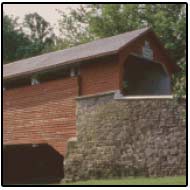Whitehall Township: A Look at History
Whitehall Township is a township which is currently a part of Lehigh County in Pennsylvania. It is also a suburb of the city of Allentown, which basically means that it is also a part of the Lehigh Valley region of Pennsylvania.
The township was officially established in 1753. It was March 20th when it was formed from part of Northampton County. The very first people to establish a community in the area were the Minsi Delaware Indians. But they’re more popularly called as the Lenni Lenapi Indians. Aside from settling, they also utilized the area for making a living out of fishing and hunting. During the early part of the 1700s, settlers of German origin started clearing land and building villages and communities. They began raising crops and settling for good. The first villages were highlighted by the construction of modern structures at that time, including sawmills, gristmills, stores, post office, and even a hotel.
The means of livelihood was merely agriculture. However, the establishment of the new township also precipitated the rise of other industries like mining. As a matter of fact, during the 1800s, the Whitehall became a popular area for mining limestone, iron ore, and slate. Also, cement industries began to appear.
 One of the interesting attributes of Whitehall all throughout its history is that it’s been able to successfully retain the combination of residential and rural characters. To attest to this, there are modern residential homes flourishing around the community while historic and old structures are still standing, including the Lorenz Guth house located near Wehr’s Dam. It is one of the most famous icons of colonial architecture in the entire Lehigh Valley region. But there are also other notable historical sites including the Peter Grim Homestead and Helfrich Springs Grist Mill.
One of the interesting attributes of Whitehall all throughout its history is that it’s been able to successfully retain the combination of residential and rural characters. To attest to this, there are modern residential homes flourishing around the community while historic and old structures are still standing, including the Lorenz Guth house located near Wehr’s Dam. It is one of the most famous icons of colonial architecture in the entire Lehigh Valley region. But there are also other notable historical sites including the Peter Grim Homestead and Helfrich Springs Grist Mill.
In the early part of the 1800s meanwhile, the original Whitehall Township built in 1753 was divided into three smaller townships namely Whitehall, South Whitehall, and North Whitehall. The term “Whitehall” has its origins from the hunting lodge of Lynford Lardner, which was painted with whitewash. Although the owner, Lardner called it the “Grouse Hall,” most people in the area fondly called it as “Whitehall.” The old villages that comprised Whitehall in its early history included Fullerton, Cementon, Mickleys, Stiles, Egypt, Hokendauqua, and West Catasauqua.
We’ve said earlier that agriculture was the major source of livelihood for the township in its early history. Today, there are only about two thousand acres of land intended for cultivation. Also, Whitehall was quite popular because of its grist mills, six of them to be exact. They were primarily built to process grains intended for farmers. Today though, only one grist mill remains standing – the Helfrich Springs Grist Mill, which by the way is a local attraction.
In 1900, Whitehall, Pennsylvania was declared a First Class Township, although the population was modest at less than 8000. It was a significant development in the township’s history because for the first time, it obtained municipal rights for supplying electric lights, sewers, and highways at the expense of the public. Finally, the Home Rule Charter form of government was approved by its residents in 1974, thereby creating the seven-member legislative body and an executive head.